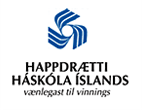Question
What can you tell me about diving sea birds?
Asked By
Þorkell Viktor Þorsteinsson
Answer
The term sea birds means birds whose habitat is closely related to the sea. Their food is mostly or excluslively from the sea and they usually nest by the coast. Sea birds can be divided into three groups depending on whether they use their feet, wings or both when swimming (Storer, 1960b). Birds that use their wings to swim are usually ocean birds while those that use their feet are a majority in coastal regions or lakes. The reason is thought to include the fact that coastal environments and lagoons are usually more varied than the open seas, making it more difficult to use the wings for swimming. There are very few examples of birds using both their feet and wings for swimming. About 30 species of sea bird live in by Iceland's coasts, with varying foraging techniques. Birds like the fulmar, gull and kittiwake use their feet to paddle around on their surface, then submerge their head or beak to reach their food. For these species it could be waste from boats, cod bait, fry, copepods or other zooplankton. The eider duck is a very common sea bird on Iceland's shores and is a busy diver. It uses its feet to dive in shallow waters and disturbs the bottom sediment to seek out tiny gammarus, mussels and other bottom dwellers. The cormorant and red-throated diver are also good divers, and like the eider duck they use their feet when diving for food. The density of water is 850 times more than that of air, which means that the power needed to flap wings is much more in water than in air - four times greater, calculated from the same Reynold's number (Vogel, 1994). This fact means that any specialisation in a bird towards the use of wings in diving will have a significant effect on its flying capabilities. The extreme specialisation for life in the sea that can be seen in penguins has resulted in them becoming flightless - but in return they have incredible diving capabilities. Research on emperor penguins (Aptenodytes forsteri) in Antarctica has shown that they can dive to a depth of 530 metres and be submerged for more than 15 minutes at a time. As with penguins, birds of the auk family (Alcidae) use their wings to dive and as a result they have less flight capability than most other birds. One member of this family went so far in this development that it became completely flightless, like the penguin. This was the great auk (Alca impennis), now extinct, whose wings were too small to enable flight. Though the great auk had few natural enemies, that did not save it from extinction. Being flightless, it was easy prey for fishermen, who did not realise how small stocks had become. The last great auks were killed on Eldey, off Iceland's Reykjanes peninsula, in 1844.
The puffin (Fratercula arctica) (image 1) also belongs to the auk family. It is called the clown of the air in some countries, as its flight appears clumsy. But the puffin is a very adept diver and research at the Westmann Islands department of the University of Iceland has shed new light on its abilities in this field.

By fixing a so-called DST-electronic tag on the back of a puffin it was possible to make measurements including exactly the depth to which they dive, how often and the duration of each instance (image 2).

- Kooyman, G.L. and P.J. Poganis (1994). Emperor penguin oxygen consumption, heart rate and plasma lactate levels during graded swimming exercise. Journal of Experimental Biology. vol. 195, pp. 199-209, Oct 1994
- Storer, R.W. (1960b). Evolution in the diving birds. Int.Ornithol.Congr. 12:694-707
- Vogel, S. (1994). Life in moving fluids. Princeton, NJ: Princeton University Press. 467pp.
- Wanless, S., J.S. Morris and M.P. Harris (1988). Diving behaviour of guillemt Uria aalge, Puffin Fratercula arctica and razorbill Alca torda as shown by radio telemetry. J. Zool., Lond.216,73-81.
Um þessa spurningu
Dagsetning
Published 9.3.2006
Category:
Citation
Páll Marvin Jónsson. „What can you tell me about diving sea birds?“. The Icelandic Web of Science 9.3.2006. http://why.is/svar.php?id=5696. (Skoðað 5.1.2026).
Author
Páll Marvin Jónssonforstöðumaður Rannsóknaseturs Vestmannaeyja



